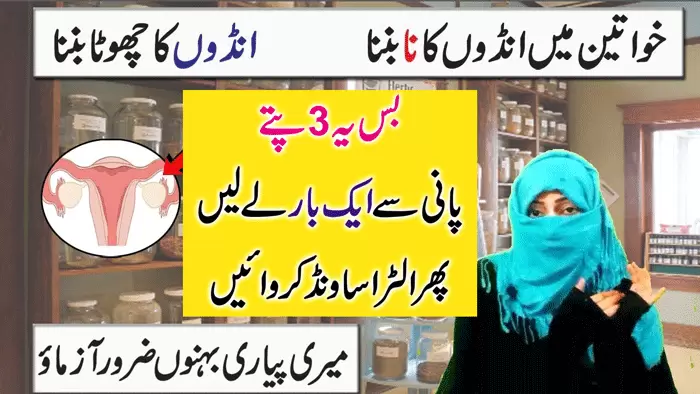Mumbai: Infertility means not being able to get pregnant after one year of trying (or six months if a woman is 35 or older). Women who can get pregnant but are unable to stay pregnant may also be infertile. If you’re having trouble getting pregnant, your doctor will help you figure out why, and work with you to find a treatment that can help. What Causes Female Infertility? There are a number of things that may be keeping you from getting pregnant:
Damage to your fallopian tubes. These structures carry eggs from your ovaries, which produce eggs, to the uterus, where the baby develops. They can get damaged when scars form after pelvic infections, endometriosis, and pelvic surgery. That can prevent sperm from reaching an egg in the tube.
What Causes Female Infertility, Hormonal Problems

The egg and sperm meet in the tube:
This is where the egg is fertilized and then moves down to the uterus to implant.
Hormonal problems:
You may not be getting pregnant because your body isn’t going through the usual hormone changes that lead to the release of an egg from the ovary and the thickening of the lining of the uterus.
Cervical issues:
Some women have a condition that prevents sperm from passing through the cervical canal.
Uterine trouble:
You may have polyps and fibroids that interfere with getting pregnant. Uterine polyps occur when too many cells grow in the endometrium, the lining of the uterus. Fibroids grow in the wall of the uterus. Other abnormalities of the uterus can also interfere, “Unexplained” infertility. For about 20% of couples who have infertility problems, the exact causes are never pinpointed.
Tests for Infertility:
Your doctor may order several tests, including a blood test to check hormone levels and an endometrial biopsy to examine the lining of your uterus.
Hysterosalpingography (HSG):
This procedure involves ultrasound or X-rays of your reproductive organs. A doctor injects either dye or saline and air into your cervix, which travels up through your fallopian tubes. With this method, your doctor can check to see if the tubes are blocked.
Laparoscopy:
Your doctor puts a laparoscope — a slender tube fitted with a tiny camera — through a small cut near your belly button. This lets him view the outside of your uterus, ovaries, and fallopian tubes to check for abnormal growths. The doctor can also see if your fallopian tubes are blocked.
How is Female Infertility Treated?
Laparoscopy. If you’ve been diagnosed with the tubal or pelvic disease, one option is to get surgery to reconstruct your reproductive organs. Your doctor puts a laparoscope through a cut near your belly button to get rid of scar tissue, treat endometriosis, open blocked tubes, or remove ovarian cysts, which are fluid-filled sacs that can form in the ovaries.
Hysteroscopy:
In this procedure, your doctor places a hysteroscope into your uterus through your cervix. It’s used to remove polyps and fibroid tumors, divide scar tissue, and open up blocked tubes.
Medication:
If you have ovulation problems, you may be prescribed drugs such as clomiphene citrate (Clomid, Serophene), gonadotropins (such as Gonal-F, Follistim, Humegon, and Pregnyl), or letrozole. Gonadotropins can trigger ovulation when Clomid or Serophene don’t work. These drugs also can also help you get pregnant by causing your ovaries to release multiple eggs. Normally, only one egg is released each month.
Your doctor may suggest that you take gonadotropin if you have unexplained infertility or when other kinds of treatment haven’t helped you get pregnant. Metformin (Glucophage) is another type of medication that may help you ovulate normally if you have insulin resistance or PCOS (polycystic ovarian syndrome).
Intrauterine insemination:
For this procedure, after semen gets rinsed with a special solution, a doctor places it into your uterus when you’re ovulating. It’s sometimes done while you’re taking meds that help trigger the release of an egg.
In vitro fertilization (IVF):
In this technique, your doctor places embryos into your uterus that were fertilized in a dish. You take gonadotropins that trigger the development of more than one egg. When the eggs are mature, your doctor uses ultrasound for guidance and collects them with a needle.
Sperm are then collected, washed, and added to the eggs in the dish. Several days later, embryos — or fertilized eggs — get put back into your uterus with a device called an intrauterine insemination catheter. If you and your partner agree, extra embryos can be frozen and saved to use later.
ICSI (intracytoplasmic sperm injection). A doctor injects the sperm directly into the egg in a dish and then places it into your uterus. GIFT (gamete intrafallopian tube transfer) and ZIFT (zygote intrafallopian transfer). Like IVF, these procedures involve retrieving an egg, combining it with sperm in a lab, and then transferring it back to your body.
In ZIFT, your doctor places the fertilized eggs — at this stage called zygotes — into your fallopian tubes within 24 hours. In GIFT, the sperm and eggs are mixed together before a doctor inserts them. Egg donation. This can help you if you have ovaries that don’t work right but you have a normal uterus. It involves removing eggs from the ovary of a donor who has taken fertility drugs. After in vitro fertilization, your doctor transfers the fertilized eggs into your uterus.



